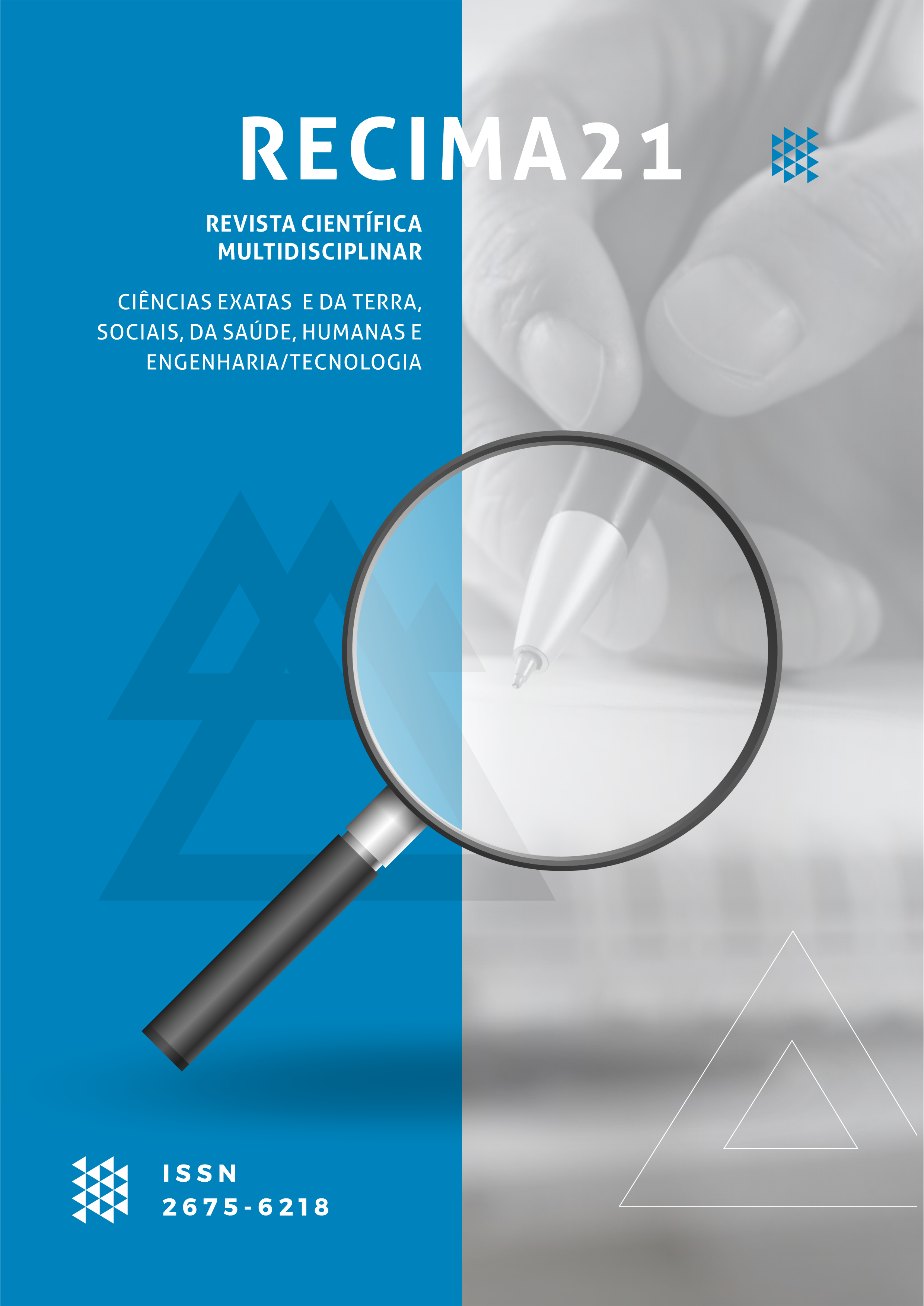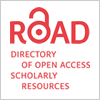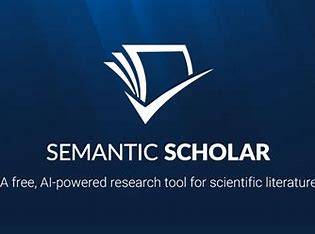EL ENFOQUE PARA LOS PADRES SOBRE LAS CAUSAS Y EL TRATAMIENTO DEL BRUXISMO INFANTIL: UNA REVISIÓN DEL ALCANCE
DOI:
https://doi.org/10.47820/recima21.v3i9.1849Palabras clave:
El bruxismo puede haber sido un problema graveResumen
INTRODUCCIÓN: El bruxismo puede ser un problema grave que afecta a la calidad de vida del niño. El rechinar de dientes en el bruxismo está causado por el apretamiento de los dientes debido a la contracción de los músculos maseteros, temporales y otros músculos de la mandíbula. Puntúa diferentes características entre el bruxismo diurno y el nocturno. OBJETIVO: Mapear en la literatura las causas del bruxismo, los obstáculos diagnósticos y los tipos de abordaje realizados a los padres por los profesionales. METODOLOGÍA: Estudio de revisión del alcance con un enfoque cuantitativo. RESULTADOS: Se identificaron 15 artículos para componer esta revisión. Los resultados identificaron que el bruxismo es difícil de diagnosticar, ya que los padres tienen dificultades para identificar los signos de la patología debido a la falta de conocimiento. Como causas, los artículos señalaron la ansiedad, el uso de dispositivos electrónicos, el aumento de la dopamina y otras causas que pueden conducir al bruxismo. Como enfoque, se identificó que la educación sanitaria a los padres por parte de los profesionales de la odontología es el método más eficiente para llevar el conocimiento a estas familias, que en su mayoría sólo conocen el diagnóstico tras la consulta con el profesional. CONSIDERACIONES FINALES: Ante estos hallazgos, se considera importante la realización de estudios que puedan aportar reflexiones sobre el abordaje de los padres sobre el bruxismo, especialmente a los padres con baja formación y situación económica.
Descargas
Citas
ARKSEY, Hilary; O'MALLEY, Lisa. Scoping studies: towards a methodological framework. International journal of social research methodology, v. 8, n. 1, p. 19-32, 2005.
BALDEZ, Patrícia Santos et al. BRUXISMO NA INFÂNCIAE O PAPEL DA ODONTOLOGIA. Contribuições científicas em odontologia: pesquisas, práticas e novos paradigmas, Livro digital Editora: Amplla Editora, p. 143. 2022.
BAHAMMAM, Hammam A. Validation of Sleep Bruxism Questionnaire Toward the Experience of Jaw Pain and Limitation of Jaw Movement in Saudi Arabian Adolescents. Cureus, v. 14, n. 6, 2022.
BRANCHER, Letícia Coutinho et al. Social, emotional, and behavioral problems and parent-reported sleep bruxism in schoolchildren. The Journal of the American Dental Association, v. 151, n. 5, p. 327-333, 2020.
BRANDÃO DE ALMEIDA, André et al. Prevalence of Sleep Bruxism Reported by Parents/Caregivers in a Portuguese Pediatric Dentistry Service: A Retrospective Study. International Journal of Environmental Research and Public Health, v. 19, n. 13, p. 7823, 2022.
CALISKAN, Secil; DELIKAN, Ebru; OZCAN-KUCUK, Ayse. Knowledge of Parents about Bruxism in their Children. Odovtos-International Journal of Dental Sciences, v. 22, n. 1, p. 123-132, 2020.
CAMOIN, A. et al. Le bruxisme du sommeil chez l’enfant. Archives de Pédiatrie, v. 24, n. 7, p. 659-666, 2017.
DE ALBUQUERQUE SILVA, Breno Iago Sena et al. Associação entre possível bruxismo e a prática de atividade física em adolescentes escolares: estudo exploratório. Revista Eletrônica Acervo Saúde, v. 15, n. 2, p. e9585-e9585, 2022.
DRUMOND, Clarissa Lopes et al. Do family functioning and mothers’ and children’s stress increase the odds of probable sleep bruxism among schoolchildren? A case control study. Clinical Oral Investigations, v. 24, n. 2, p. 1025-1033, 2020.
ESTEVES, José Lucas Santos et al. Uso da acupuntura no tratamento de bruxismo. Revista da Universidade Vale do Rio Verde, v. 15, n. 1, p. 763-773, 2017.
FABER, Carolina; FABER, Jorge; SOUZA, Andreia Oliveira. Bruxismo do sono e seus fatores associados: visão geral narrativa. Revista Clínica de Ortodontia Dental Press, v. 20, n. 4, 2021.
GALVÃO, Taís Freire; PANSANI, Thais de Souza Andrade; HARRAD, D. Principais itens para relatar Revisões sistemáticas e Meta-análises: A recomendação PRISMA. Epidemiol e Serviços Saúde [Internet]. 2015 Jun;24(2):335–42. Available from: http://www.iec.pa.gov.br/template_doi_ess.php?doi=10.5123/S1679-49742015000200017&scielo=S2237-96222015000200335
GARMROUDINEZHAD ROSTAMI, Elham et al. High separation anxiety trajectory in early childhood is a risk factor for sleep bruxism at age 7. Sleep, v. 43, n. 7, p. zsz317, 2020.
KENNERT, Benjamin A. et al. Parent survey of sleep problems among children with charge syndrome. Research in Developmental Disabilities, v. 101, p. 103614, 2020.
KOBAYASHI, Fernanda Yukie et al. Immediate Evaluation of the Effect of Infrared LED Photobiomodulation on Childhood Sleep Bruxism: A Randomized Clinical Trial. Life, v. 12, n. 7, p. 964, 2022.
LAGANÀ, Giuseppina et al. Sleep Bruxism and SDB in Albanian Growing Subjects: A Cross-Sectional Study. Dentistry Journal, v. 9, n. 3, p. 25, 2021.
LIMA, Larissa Chaves Morais de et al. Impact of the COVID-19 pandemic on sleep quality and sleep bruxism in children eight to ten years of age. Brazilian Oral Research, v. 36, 2022.
MIRANDA, Amelia Cristina Pereira; DE OLIVEIRA, Gleisla Garcia; KLUG, Rufino José. BRUXISMO NO SONO E SUAS CONSEQUÊNCIAS OROFACIAIS. Facit Business and Technology Journal, v. 1, n. 30, 2021.
RAMOS, Priscila Figueiredo Cruz et al. Breathing problems, being an only child and having parents with possible sleep bruxism are associated with probable sleep bruxism in preschoolers: a population-based study. Sleep and Breathing, v. 25, n. 3, p. 1677-1684, 2021.
RÉDUA, Renato Barcellos et al. Bruxismo na infância–aspectos contemporâneos no século 21–revisão sistemática. Full dent. sci, p. 131-137, 2019.
RESTREPO, Claudia; SANTAMARÍA, Adriana; MANRIQUE, Rubén. Sleep bruxism in children: relationship with screen-time and sugar consumption. Sleep medicine: X, v. 3, p. 100035, 2021.
RODRÍGUEZ-ROBLEDO, Emilio R. et al. Prevalencia de bruxismo y trastornos temporomandibulares asociados en una población de escolares de San Luis Potosí, México. International journal of odontostomatology, v. 12, n. 4, p. 382-387, 2018.
RUY CARNEIRO, Natalia Cristina et al. Risk factors associated with reported bruxism among children and adolescents with Down Syndrome. CRANIO®, v. 38, n. 6, p. 365-369, 2020.
SALGUEIRO, Mônica da Consolação Canuto et al. Effects of Photobiomodulation in Children with Down Syndrome and Possible Sleep Bruxism: Protocol For A Randomized, Controlled, Blind, Clinical Trial: Study protocol clinical trial (SPIRIT compliant). Medicine, v. 99, n. 17, 2020.
SALGUEIRO, Mônica da Consolação Canuto et al. Evaluation of muscle activity, bite force and salivary cortisol in children with bruxism before and after low level laser applied to acupoints: study protocol for a randomised controlled trial. BMC complementary and alternative medicine, v. 17, n. 1, p. 1-7, 2017.
SANTOS, Cristina Mamédio da Costa; PIMENTA, Cibele Andrucioli de Mattos; NOBRE, Moacyr Roberto Cuce. The PICO strategy for the research question construction and evidence search. Revista latino-americana de enfermagem, v. 15, p. 508-511, 2007.
SEGÙ, M. et al. Correlation between parental-reported tooth grinding and sleep disorders: investigation in a cohort of 741 consecutive children. Pain Research and Management, v. 2020, 2020.
SOARES, Josiane Pezzini et al. Association of gender, oral habits, and poor sleep quality with possible sleep bruxism in schoolchildren. Brazilian Oral Research, v. 34, 2020.
SUGUNA, Sruthi; GURUNATHAN, Deepa. Quality of life of children with sleep bruxism. Journal of family medicine and primary care, v. 9, n. 1, p. 332, 2020.
Descargas
Publicado
Cómo citar
Número
Sección
Categorías
Licencia
Derechos de autor 2022 RECIMA21 - Revista Científica Multidisciplinar - ISSN 2675-6218

Esta obra está bajo una licencia internacional Creative Commons Atribución 4.0.
Os direitos autorais dos artigos/resenhas/TCCs publicados pertecem à revista RECIMA21, e seguem o padrão Creative Commons (CC BY 4.0), permitindo a cópia ou reprodução, desde que cite a fonte e respeite os direitos dos autores e contenham menção aos mesmos nos créditos. Toda e qualquer obra publicada na revista, seu conteúdo é de responsabilidade dos autores, cabendo a RECIMA21 apenas ser o veículo de divulgação, seguindo os padrões nacionais e internacionais de publicação.

 Clique para ver detalhes
Clique para ver detalhes 











